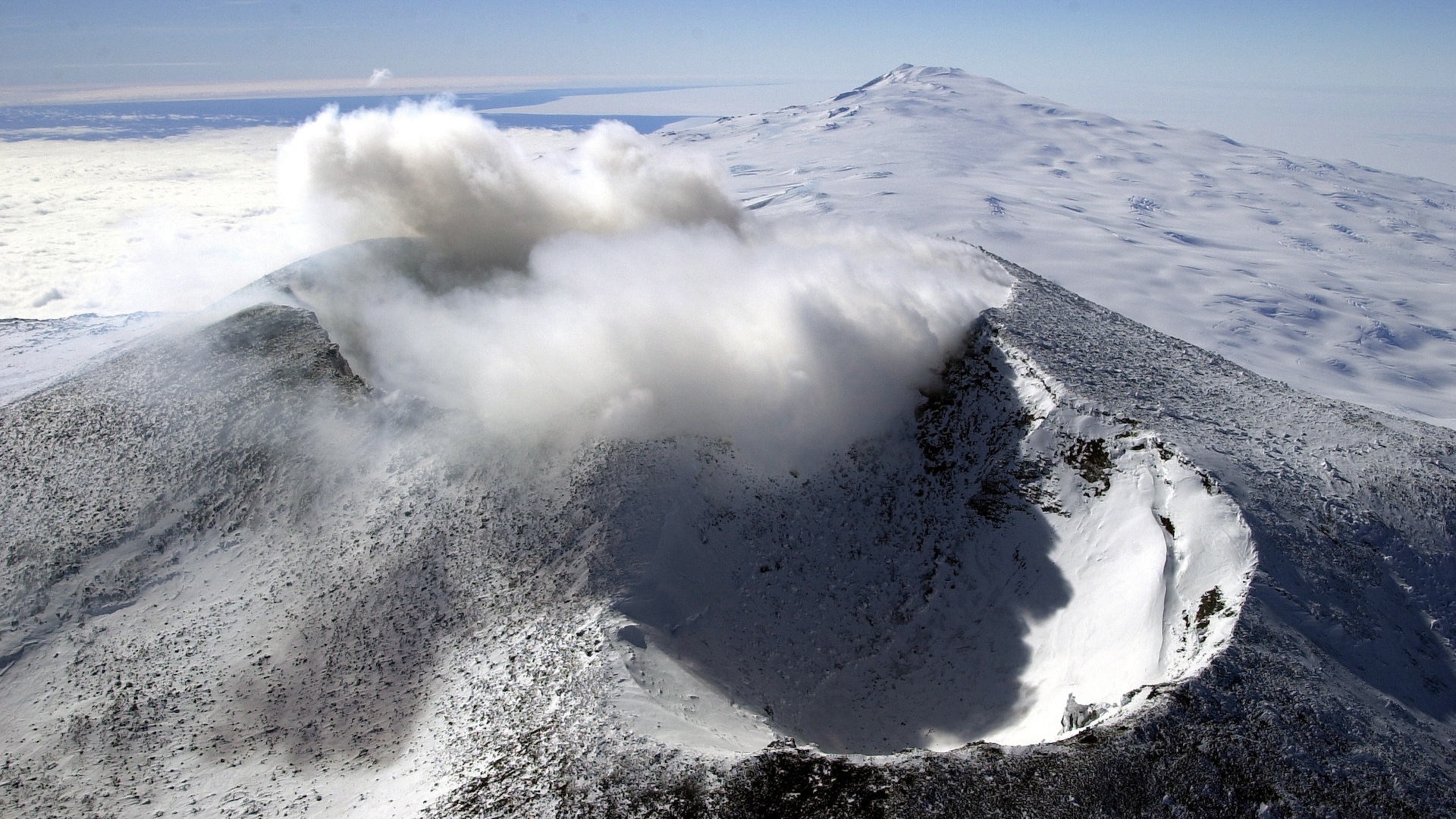Antarctica ice melt could cause 100 hidden volcanoes to erupt
More than 100 volcanoes lurk beneath the surface in Antarctica. Ice sheet melt could set them off.

A slow climate feedback loop may be bubbling beneath Antarctica's vast ice sheet. The continent, divided east to west by the Transantarctic Mountains, includes volcanic giants such as Mount Erebus and its iconic lava lake. But at least 100 less conspicuous volcanoes dot Antarctica, with many clustered along its western coast. Some of those volcanoes peak above the surface, but others sit several kilometers beneath the Antarctic Ice Sheet.
Climate change is causing the ice sheet to melt, raising global sea levels. The melting is also removing the weight over the rocks below, with more local consequences. Ice sheet melt has been shown to increase volcanic activity in subglacial volcanoes elsewhere on the globe. Coonin et al. ran 4,000 computer simulations to study how ice sheet loss affects Antarctica's buried volcanoes, and they found that gradual melt could increase the number and size of subglacial eruptions.
The reason is that this unloading of ice sheets reduces pressure on magma chambers below the surface, causing the compressed magma to expand. This expansion increases pressure on magma chamber walls and can lead to eruptions.
Some magma chambers also hold copious amounts of volatile gases, which are normally dissolved into the magma. As the magma cools and when overburden pressure reduces, those gases rush out of solution like carbonation out of a newly opened bottle of soda, increasing the pressure in the magma chamber. This pressure means that melting ice can expedite the onset of an eruption from a subglacial volcano.
Eruptions of subglacial volcanoes may not be visible on the surface, but they can have consequences for the ice sheet. Heat from these eruptions can increase ice melting deep below the surface and weaken the overlying ice sheet — potentially leading to a feedback loop of reduced pressure from the surface and further volcanic eruptions.
The authors stress that this process is slow, taking place over hundreds of years. But that means the theorized feedback could continue even if the world curtails anthropogenic warming. Antarctica's ice sheet was much thicker during the last ice age, and it is possible that the same process of unloading and expansion of magma and gas may have contributed to past eruptions.
Get the world’s most fascinating discoveries delivered straight to your inbox.
This article was originally published on Eos.org. Read the original article.

Madeline Reinsel is a science writer with a background in environmental science and wildlife conservation, and a recent graduate from UC Santa Cruz's Science Communication graduate program. Before graduate school, she worked for the Environment & Sustainability program at the College of William & Mary, mostly on turtle conservation projects. She is also a Part 107 drone operator and the communications director for the Diamondback Terrapin Working Group.


